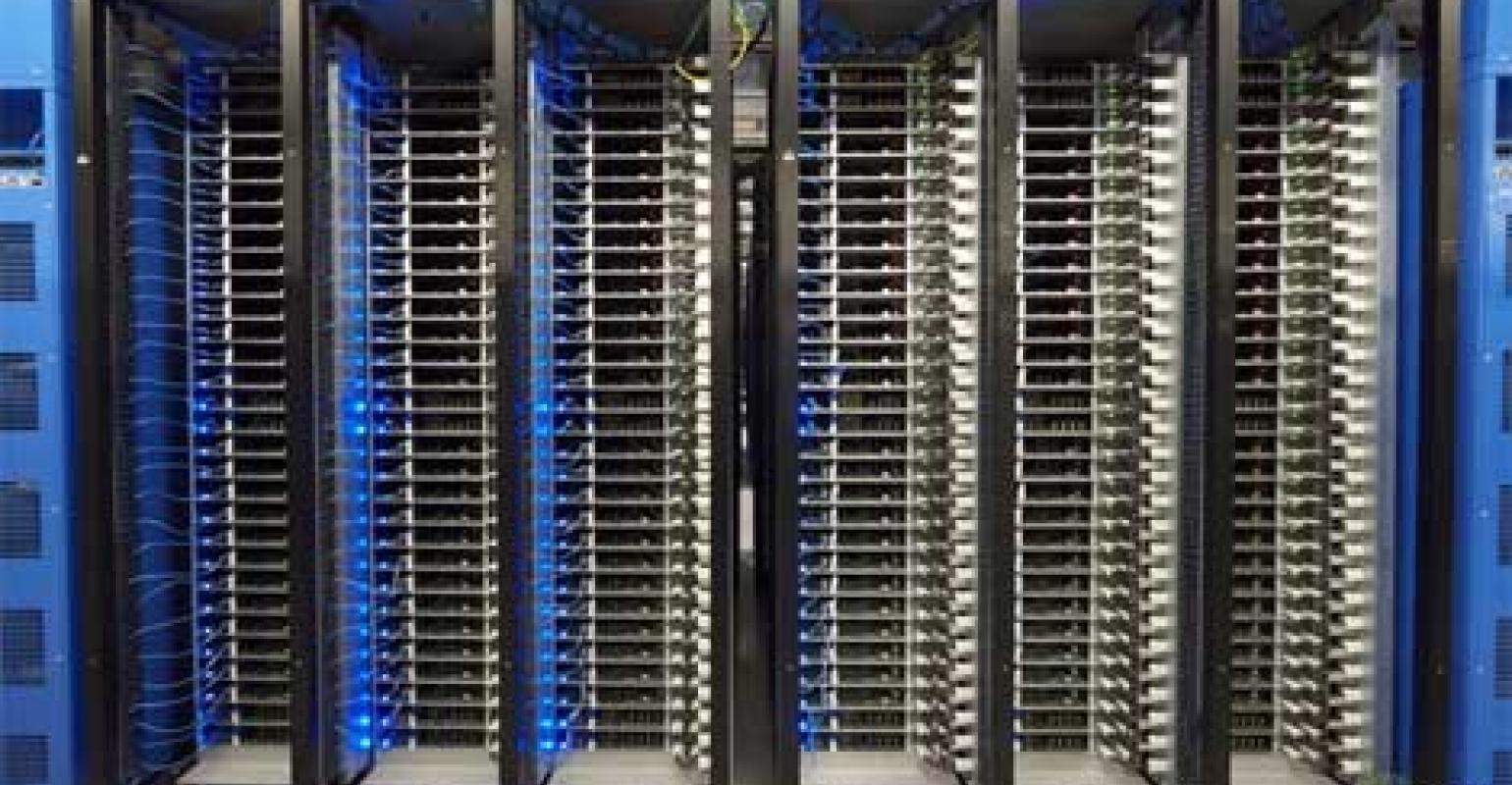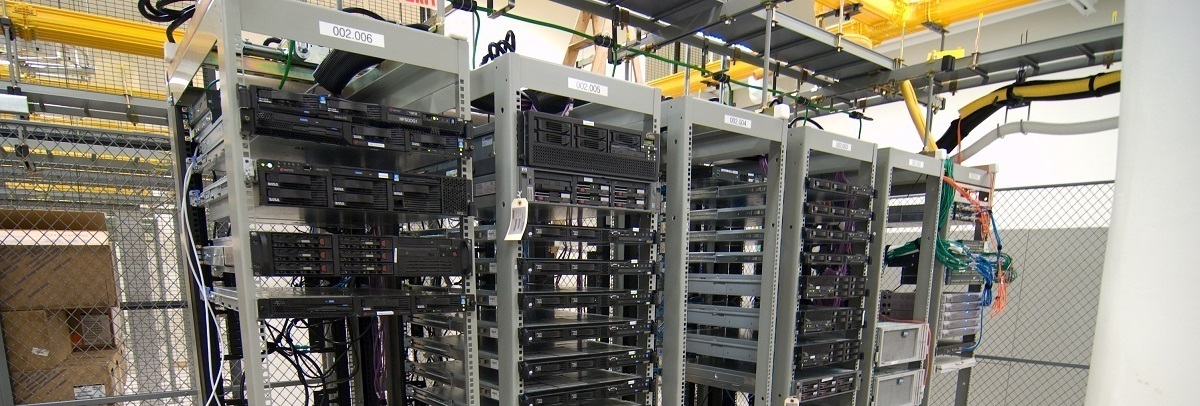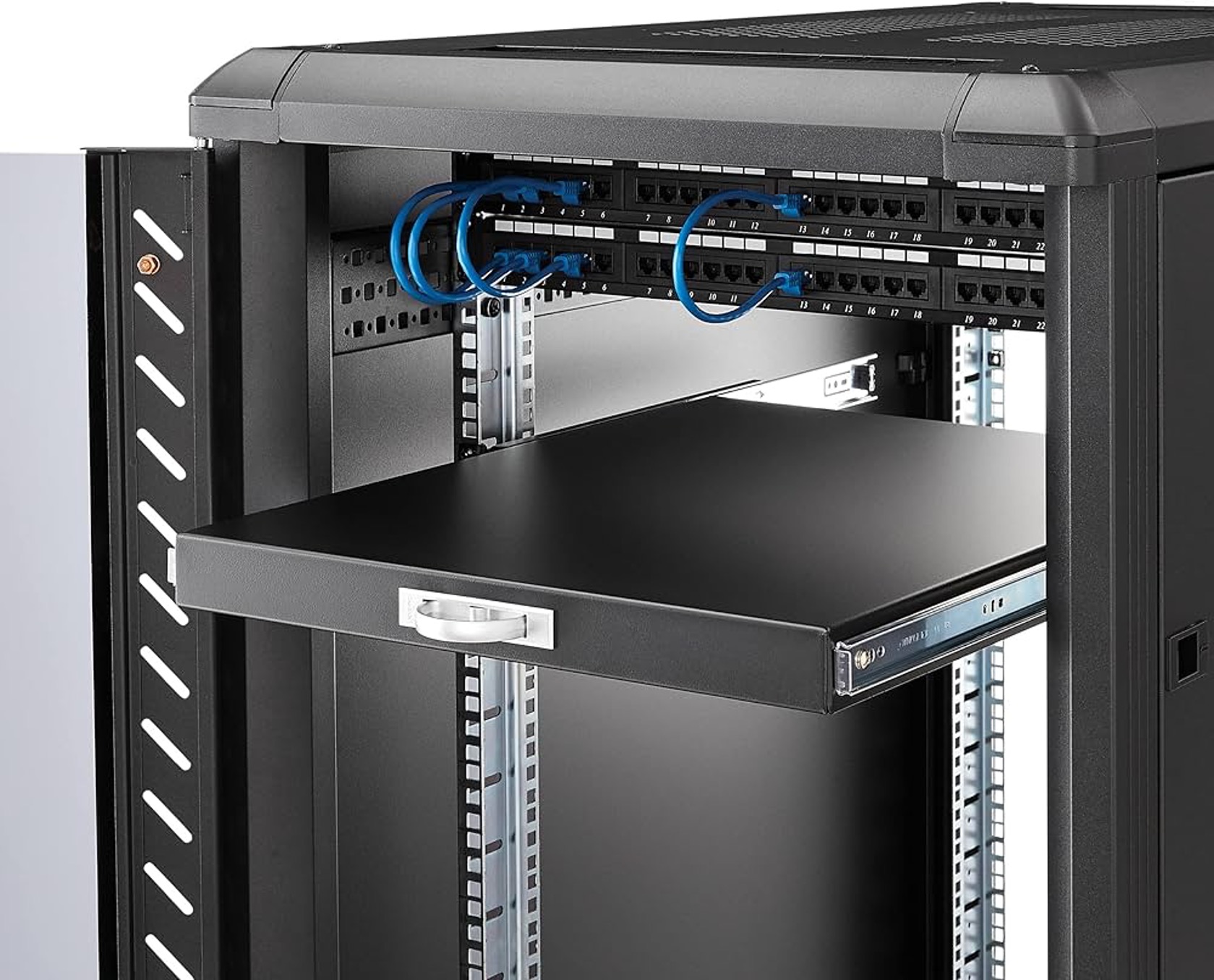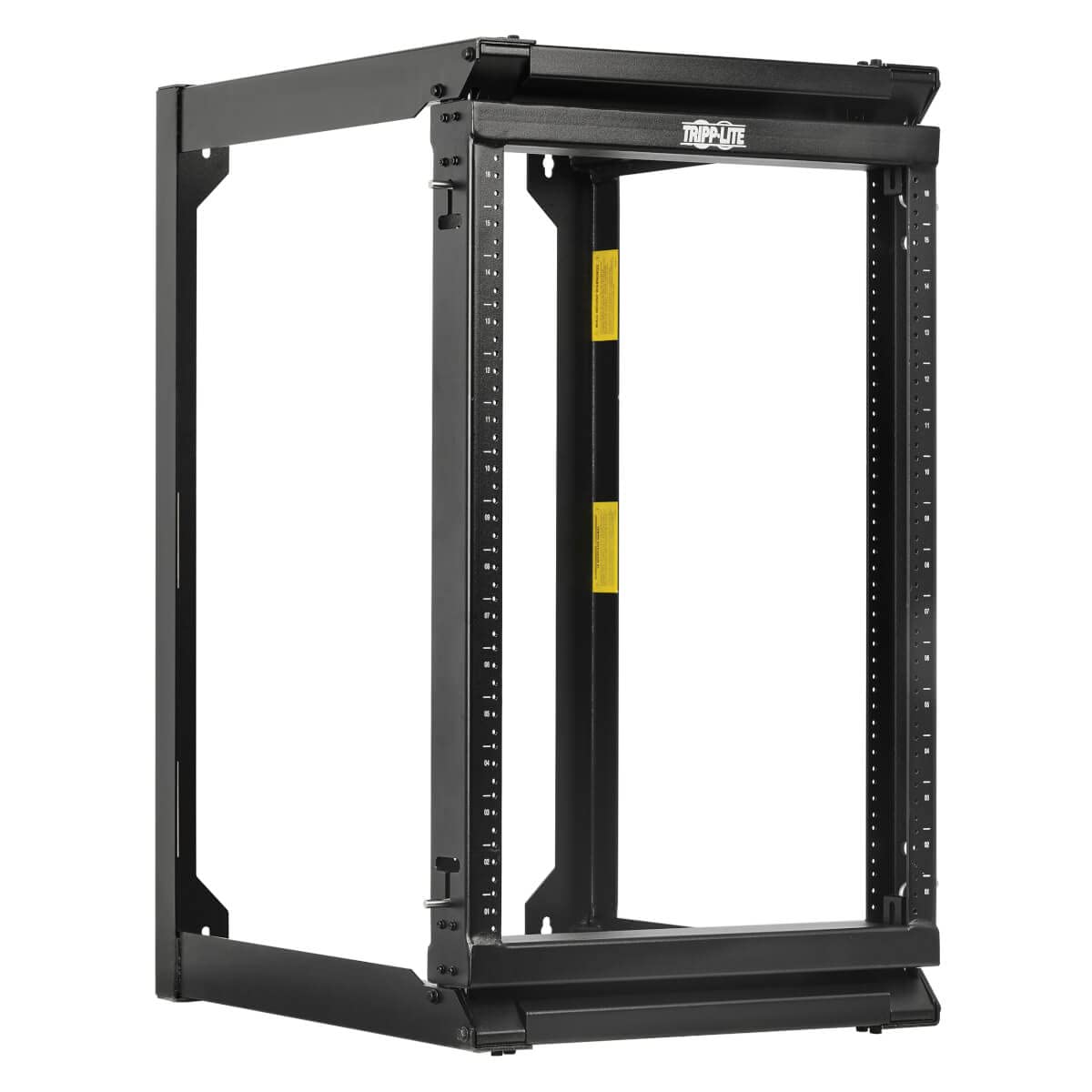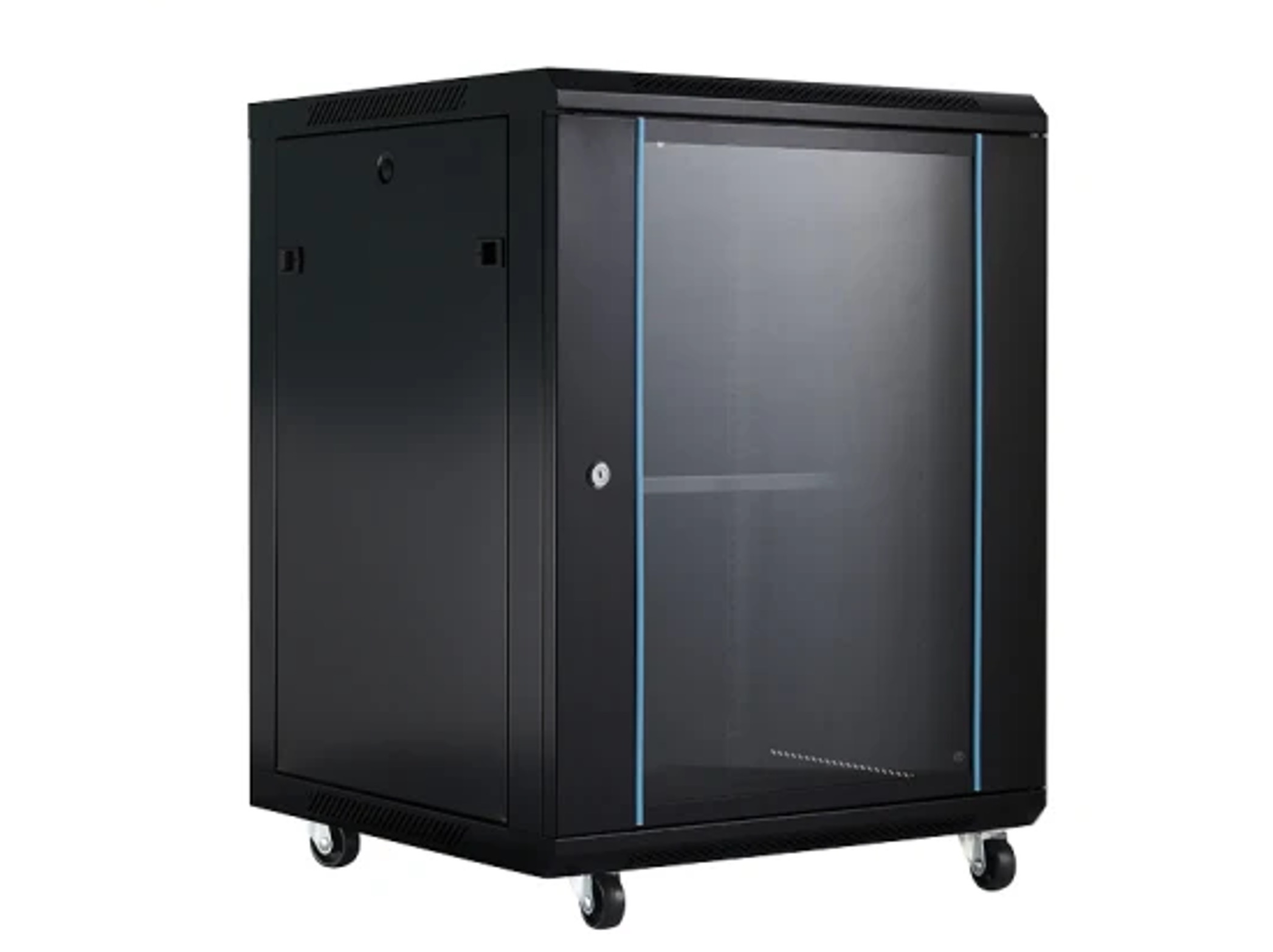Introduction
A server rack is a crucial component in the world of information technology. It serves as a dedicated space for housing, organizing, and securing server and networking equipment. As technology advances, the need for efficient server rack solutions becomes increasingly vital for businesses and organizations.
In this article, we will explore the concept of a server rack and delve into the question of how many U (units) are typically found in a standard server rack. Additionally, we will look at the importance of U measurement and how it plays a significant role in selecting the right rack for your needs.
Before we dive into the details, let’s clarify what exactly a server rack is and why it is so essential in the IT infrastructure.
Subtitle: What is a server rack?
A server rack, also known as a rack enclosure, is a housing unit specifically designed to accommodate servers, networking devices, and other IT equipment. The rack provides a framework where these devices can be mounted, wired, and organized in a structured manner.
Server racks are typically made of sturdy metal or aluminum and come in various sizes, depending on the requirements and available space. They are equipped with front and rear doors, as well as removable side panels, to ensure easy access for maintenance and installation purposes. Additionally, server racks often include cable management features to ensure tidiness and proper airflow for optimal equipment performance.
Subtitle: Why do we need server racks?
Server racks play a crucial role in the efficient functioning of an IT infrastructure. Here are a few reasons why they are indispensable:
- Space optimization: Server racks allow for the consolidation of multiple servers, switches, and other networking equipment in a compact and organized manner. This reduces the overall footprint, saves valuable office space, and facilitates efficient cable management.
- Equipment protection: Server racks provide a secure and controlled environment for expensive and sensitive IT equipment. They safeguard against physical damage, dust, and unauthorized access, ensuring the longevity and reliability of the devices.
- Easy maintenance: The design of server racks allows for easy access to equipment for troubleshooting and routine maintenance. This simplifies the process of adding, removing, or replacing devices without disrupting the entire infrastructure.
- Airflow management: Server racks are designed with proper ventilation, fan placement, and cable routing to ensure efficient airflow. This helps prevent equipment overheating and extends the lifespan of the devices.
Now that we understand the significance of server racks, let’s explore the standard dimensions and U measurements commonly found in these racks.
What is a server rack?
A server rack, also known as a rack enclosure, is a housing unit specifically designed to accommodate servers, networking devices, and other IT equipment. The rack provides a framework where these devices can be mounted, wired, and organized in a structured manner.
Server racks are typically made of sturdy metal or aluminum and come in various sizes, depending on the requirements and available space. They are equipped with front and rear doors, as well as removable side panels, to ensure easy access for maintenance and installation purposes. Additionally, server racks often include cable management features to ensure tidiness and proper airflow for optimal equipment performance.
Server racks serve as the backbone of any IT infrastructure as they offer several benefits:
- Space optimization: With the ever-increasing demand for data storage and processing power, server racks allow for the consolidation of multiple servers, switches, and other networking equipment in a compact and organized manner. This reduces the overall footprint, saves valuable office space, and facilitates efficient cable management. By housing all equipment in a centralized location, server racks make it easier to manage, troubleshoot, and upgrade the infrastructure.
- Equipment protection: Server racks provide a secure environment for expensive and sensitive IT equipment. These racks are designed to safeguard the devices against physical damage, dust, and unauthorized access. The front and rear doors, along with the lockable side panels, ensure that only authorized personnel can access the equipment. This added layer of protection ensures the longevity and reliability of the devices.
- Easy maintenance and scalability: The design of server racks allows for easy access to equipment for troubleshooting and routine maintenance. The servers and other devices can be mounted on rails or shelves, making it simple to remove or reposition them as needed. This flexibility facilitates easy expansion and scalability, allowing businesses to adapt to changing technology needs. With proper cable management and labeling, identifying and replacing faulty devices becomes a hassle-free process.
- Airflow management: Server racks are designed with proper ventilation, fan placement, and cable routing to ensure efficient airflow. Adequate airflow prevents equipment overheating and improves overall system performance and reliability. Server racks often feature options for cable management, such as cable trays and grommets, to ensure organized routing and minimize cable clutter. This promotes better airflow and reduces the risk of cables obstructing the cooling mechanisms.
Overall, server racks are an essential component of any IT infrastructure, providing a centralized and secure solution for housing critical equipment. By utilizing server racks, organizations can optimize their space, protect their valuable assets, streamline maintenance procedures, and improve overall system performance and reliability.
Why do we need server racks?
Server racks play a crucial role in the efficient functioning of an IT infrastructure. Here are a few reasons why they are indispensable:
- Space optimization: Server racks allow for the consolidation of multiple servers, switches, and other networking equipment in a compact and organized manner. This reduces the overall footprint, saves valuable office space, and facilitates efficient cable management. Traditional setups with standalone servers can be chaotic and difficult to manage, whereas server racks provide a structured and streamlined solution for housing and organizing equipment.
- Equipment protection: Server racks provide a secure and controlled environment for expensive and sensitive IT equipment. They safeguard against physical damage, dust, and unauthorized access, ensuring the longevity and reliability of the devices. The sturdy construction of server racks offers protection against accidental impacts, which can occur in busy server rooms or data centers. Additionally, the front and rear doors, along with lockable side panels, provide an added layer of security.
- Easy maintenance: The design of server racks allows for easy access to equipment for troubleshooting and routine maintenance. This simplifies the process of adding, removing, or replacing devices without disrupting the entire infrastructure. The removable side panels and well-designed cable management solutions make it convenient for IT personnel to address issues promptly. This reduces downtime and ensures efficient operation of the server room or data center.
- Airflow management: Server racks are designed to provide proper ventilation and airflow. They are equipped with front-to-back cooling systems to ensure the equipment stays at optimal temperatures. The racks also incorporate cable management features, such as cable trays and grommets, to keep cables organized and prevent them from obstructing airflow. Proper airflow management reduces the risk of equipment overheating, prolonging the lifespan of servers and other networking devices.
- Scalability: Server racks offer scalability, allowing businesses to easily expand their IT infrastructure as needed. The standardized size and form factor of server racks make it simple to install new servers and devices. With the rack’s modular design, additional shelves or mounting rails can be added to accommodate more equipment. This flexibility is particularly valuable for growing businesses that anticipate future expansion or technology upgrades.
By utilizing server racks, businesses can optimize their space, protect their valuable assets, streamline maintenance procedures, ensure proper airflow, and easily scale their IT infrastructure. The efficient and organized arrangement of equipment inside server racks not only improves the overall performance and reliability but also enhances the aesthetics of the server room or data center.
Standard server rack dimensions
Server racks come in various sizes, typically defined by their height, width, and depth measurements. While there are variations in dimensions across different manufacturers and regions, standardization has been widely adopted to ensure compatibility and interoperability.
Height:
The height of a server rack is measured in rack units (U) and represents the vertical space available for mounting equipment. One rack unit (1U) is equivalent to 1.75 inches (44.45 mm) in height. The height of server racks commonly ranges from 1U to 52U, with 42U being the most common size in data center environments.
Width:
The width of a server rack is typically standard at 19 inches (482.6 mm). This standard width allows for compatibility and interchangeability between different equipment and rack accessories. However, it’s worth noting that certain specialized racks may have wider or narrower widths to accommodate specific devices or requirements.
Depth:
The depth of a server rack can vary based on the available space and the type of equipment to be installed. The standard depth for server racks is usually around 24 inches (609.6 mm) or 31 inches (787.4 mm). However, racks with deeper depths, such as 42 inches (1066.8 mm), are also available for accommodating larger and deeper networking equipment or servers.
It’s important to consider the dimensions of the server rack when selecting one for your specific needs. Ensure that the rack height is sufficient to accommodate the equipment you plan to install. Additionally, consider the depth requirement, particularly if you have devices with longer protruding components or if you need to allow space for cabling and proper airflow management.
Furthermore, it’s important to note that the height, width, and depth measurements are external dimensions. The internal usable space of the rack may be slightly smaller due to the thickness of the rack’s frame, doors, and other structural elements.
By understanding the standard server rack dimensions, businesses can make informed decisions based on their requirements and available space. Selecting the right-sized rack ensures compatibility, ease of installation, and efficient utilization of space.
How many U in a typical server rack?
In a typical server rack, the number of available rack units (U) represents the vertical space for mounting equipment. The number of U in a server rack can vary, but the most common size found in data centers and server rooms is the 42U rack.
A 42U server rack provides a total of 42 rack units, each measuring 1.75 inches (44.45 mm) in height. Multiplying the number of available U by the height of each unit gives us the total usable height of the rack. In the case of a 42U rack, the total height is approximately 73.5 inches (1866.9 mm).
However, it is worth noting that server racks come in various sizes, ranging from as small as 1U to as large as 52U. The choice of rack size depends on the specific needs and requirements of the organization.
Smaller rack sizes, such as 1U to 4U, are commonly used for housing network switches, small servers, or other low-profile equipment. These racks are suitable for environments with limited space or for deploying a few devices that do not require as much vertical rack space.
Mid-range rack sizes, such as 12U to 28U, are often favored by small to medium-sized businesses or for specific use cases. These racks can accommodate a moderate number of servers and networking devices, making them suitable for various applications and industries.
For larger-scale deployments or organizations with significant IT infrastructure requirements, the 42U rack is the most frequently used option. It provides ample space for multiple servers, switches, storage devices, and other equipment in a consolidated and organized manner. It strikes a balance between capacity, manageability, and cost-effectiveness.
There are also larger rack sizes available, such as 48U or 52U racks, which offer increased vertical space for extensive server installations or data center deployments. These racks are commonly found in enterprise-level environments with high-density equipment configurations.
Ultimately, the choice of rack size depends on factors such as the number and type of equipment to be installed, the available space, and future growth considerations. It is essential to assess the specific requirements and consult with experts or rack manufacturers to determine the most suitable rack size for your needs.
How to measure U in a server rack?
Measuring the rack units (U) in a server rack is a straightforward process that requires a few simple steps. The U measurement system allows for easy identification and allocation of vertical space within a rack. Here’s how you can measure U in a server rack:
- Start from the bottom: Begin by locating the lowest point on the front vertical rails of the server rack. This is typically where the first rack unit begins.
- Count the units: To measure U, count the number of evenly spaced holes or slots on the vertical rails. Each hole or slot represents one rack unit. As you count, keep track of the number of units you encounter. You can use your finger or a pointing tool to help maintain accuracy.
- Include the bottom unit: The number you counted represents the number of rack units from the starting point up to that spot. Since the bottom of the rack is considered the first unit, make sure to include it in your count.
- Record the measurement: Once you have finished counting, write down the total number of rack units you measured. This measurement will help you determine the appropriate size and amount of equipment you can install in the rack.
It’s important to note that when measuring U, you are only considering the vertical space available for mounting equipment. The width and depth of the rack are separate measurements and should be taken into consideration when selecting a rack for specific equipment requirements.
The U measurement system allows for easy organization and compatibility between different rack-mounted devices and accessories. It enables efficient utilization of space in server racks, simplifies equipment installation and positioning, and facilitates streamlined cable management.
By understanding how to measure U in a server rack, IT professionals can effectively plan and optimize their rack infrastructure to accommodate the desired equipment configuration.
Understanding the U measurement system
The U measurement system is a standardized method used to measure the vertical space within a server rack. Each rack unit, represented as “U,” measures 1.75 inches (44.45 mm) in height. Understanding this measurement system is essential for selecting the right-sized rack and efficiently utilizing the available space.
The U measurement system is based on the vertical spacing of the mounting holes or slots found on the front and rear vertical rails of the rack. These holes or slots are evenly spaced and allow for the insertion of mounting screws or cage nuts to secure equipment.
Here are some key points to understand about the U measurement system:
- Standard unit height: The standard unit height is 1U, which is equivalent to 1.75 inches (44.45 mm) in height. This measurement has become widely adopted in the IT industry, allowing for compatibility and interchangeability between different rack-mounted devices and accessories.
- Vertical increment: Each additional U represents an increment of 1.75 inches (44.45 mm) in height. For example, a 2U device would occupy 3.5 inches (88.9 mm) of vertical space, while a 4U device would occupy 7 inches (177.8 mm).
- Flexibility in equipment sizing: The U measurement system provides flexibility in equipment sizing and allows for efficient use of rack space. IT professionals can select devices in increments of 1U that best fit their specific requirements, whether it’s a compact 1U server or a larger 4U storage device.
- Easy equipment identification: Racks typically have U numbering or labels on the front and/or rear vertical rails. These markings help identify and allocate specific U spaces for mounting equipment. They also aid in the organization and placement of devices within the rack.
- Horizontal compatibility: While the U measurement system focuses on vertical space, the horizontal width of server racks is usually standardized at 19 inches (482.6 mm). This width allows for compatibility between different equipment and rack accessories, simplifying the installation and arrangement of devices.
By using the U measurement system, IT professionals can easily determine the vertical space required for mounting equipment in a server rack. This standardized measurement ensures compatibility, simplifies installation and organization, and allows for efficient use of rack space.
Understanding the U measurement system is crucial when planning and designing the layout of a server rack. It enables IT professionals to effectively allocate and manage the vertical space, ensuring optimal utilization and easy scalability of their rack infrastructure.
Importance of U measurement in server racks
The U measurement system plays a crucial role in the design, organization, and efficient utilization of server racks. It provides a standardized method for measuring the vertical space available for mounting equipment. The importance of the U measurement system in server racks can be seen in the following aspects:
- Equipment Compatibility: The U measurement system ensures compatibility and interchangeability between different rack-mounted devices and accessories. By adhering to the standard height of 1U (1.75 inches or 44.45 mm), equipment manufacturers can design their products to fit within these increments, allowing for easy installation and integration into server racks.
- Space Optimization: The U measurement system enables IT professionals to effectively utilize the vertical space in server racks. By measuring the height of the equipment in U, they can plan and allocate the necessary number of rack units for each device. This helps optimize space, allowing for the consolidation of multiple devices in an organized and streamlined manner.
- Proper Equipment Arrangement: The U measurement system helps IT professionals properly arrange their equipment within the server rack. By knowing the size of each device in U, they can plan the positioning and placement of equipment to ensure efficient cable management, proper airflow, and ease of maintenance. This ensures that the rack is organized, accessible, and conducive to optimal performance and scalability.
- Easy Expansion and Upgrades: The U measurement system simplifies expansion and upgrades within server racks. As businesses grow and their IT needs evolve, the ability to easily add or replace equipment becomes crucial. With the U measurement system, IT professionals can accurately assess the available U space in the rack and plan for future growth. This allows for a seamless transition in scaling up the infrastructure without disruption to the existing setup.
- Standardization and Interoperability: The U measurement system provides standardization and interoperability across the IT industry. It ensures that equipment from different manufacturers can be easily integrated into server racks without compatibility issues. This standardization simplifies the procurement and deployment process, allowing for more flexibility in selecting the most suitable devices for specific requirements.
The U measurement system is a fundamental aspect of server rack design and management. It enables IT professionals to effectively plan, organize, and optimize their rack infrastructure by providing a consistent and efficient method for measuring vertical space. By utilizing the U measurement system, businesses can maximize the potential of their server racks and ensure a scalable and future-proof IT infrastructure.
Conclusion
Server racks are essential components in the world of information technology, providing a dedicated space for housing, organizing, and securing server and networking equipment. Understanding the U measurement system and the importance of proper rack dimensions is crucial for effectively utilizing space and optimizing equipment placement.
By utilizing the standard U measurement system, IT professionals can efficiently measure vertical space within server racks. This standardized measurement system ensures compatibility, simplifies equipment installation and organization, and allows for easy expansion and scalability.
Server racks offer numerous advantages, including space optimization, equipment protection, easy maintenance, and proper airflow management. They provide a secure and controlled environment for valuable IT assets, simplify troubleshooting and routine maintenance, and ensure efficient airflow and cooling.
When selecting a server rack, it is essential to consider the standard dimensions, which typically include the height, width, and depth. The height is measured in rack units (U), with the most common size being the 42U rack. The width is typically 19 inches, while the depth can vary based on the specific equipment requirements.
The U measurement system offers an efficient way to measure and allocate vertical space within a server rack. It helps IT professionals properly arrange equipment, optimize space utilization, and plan for future growth and scalability.
In conclusion, understanding the U measurement system and the significance of proper rack dimensions is vital for IT professionals. It allows for efficient equipment placement, optimal space utilization, ease of maintenance, and scalability. By utilizing the U measurement system effectively, businesses can build a reliable and well-organized IT infrastructure that supports their current and future needs.







